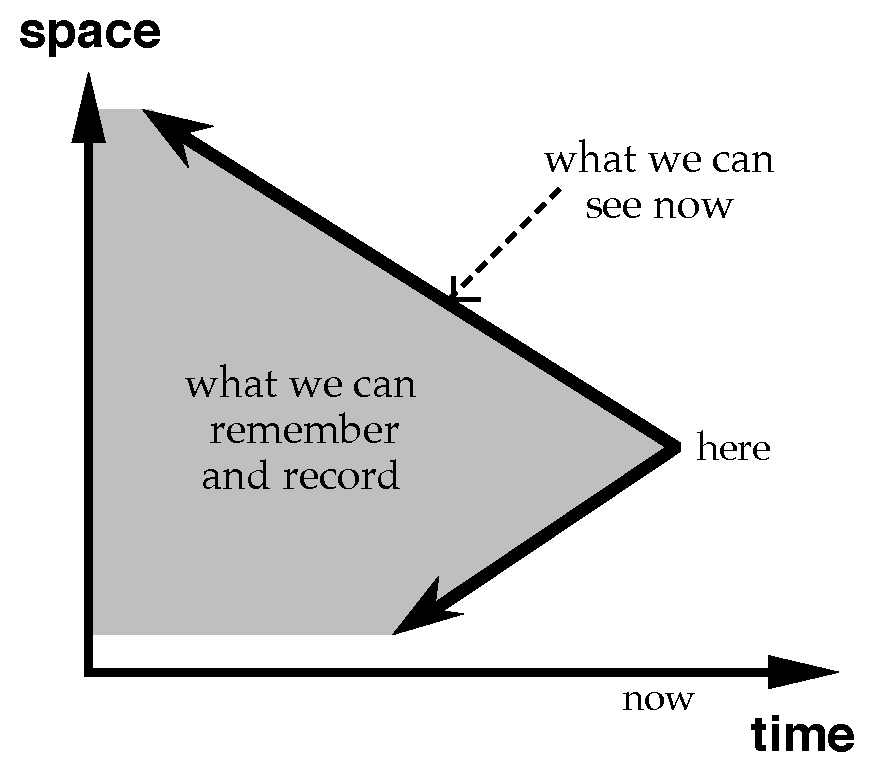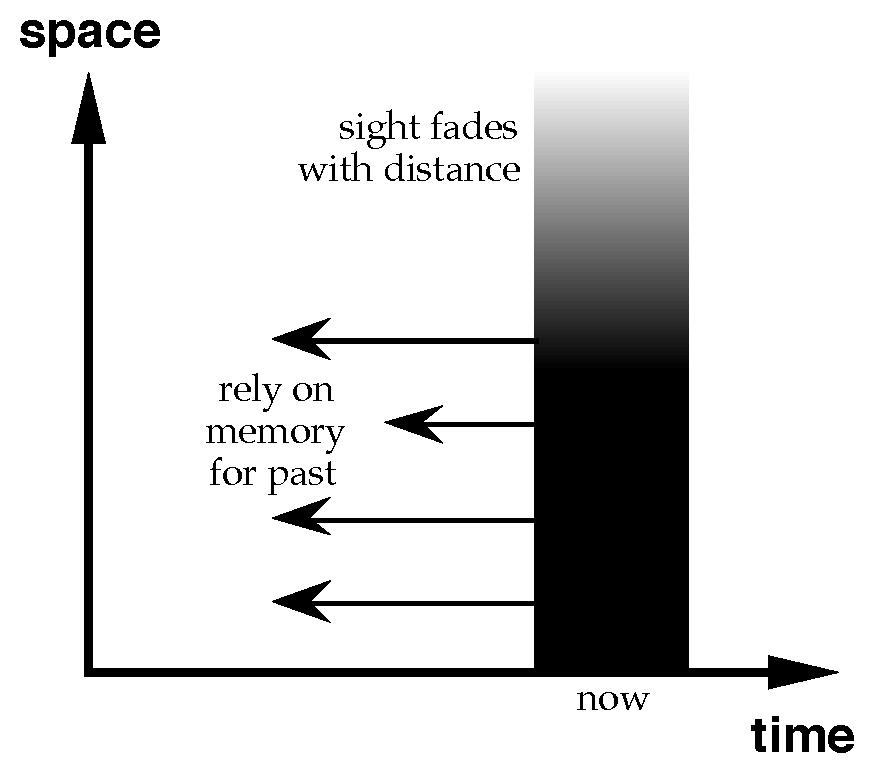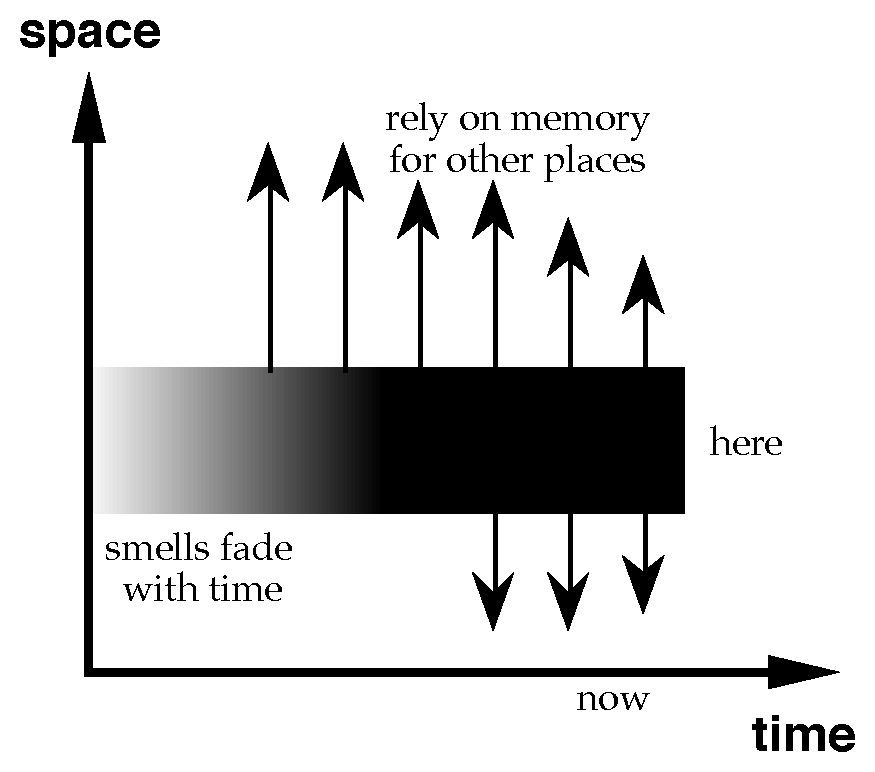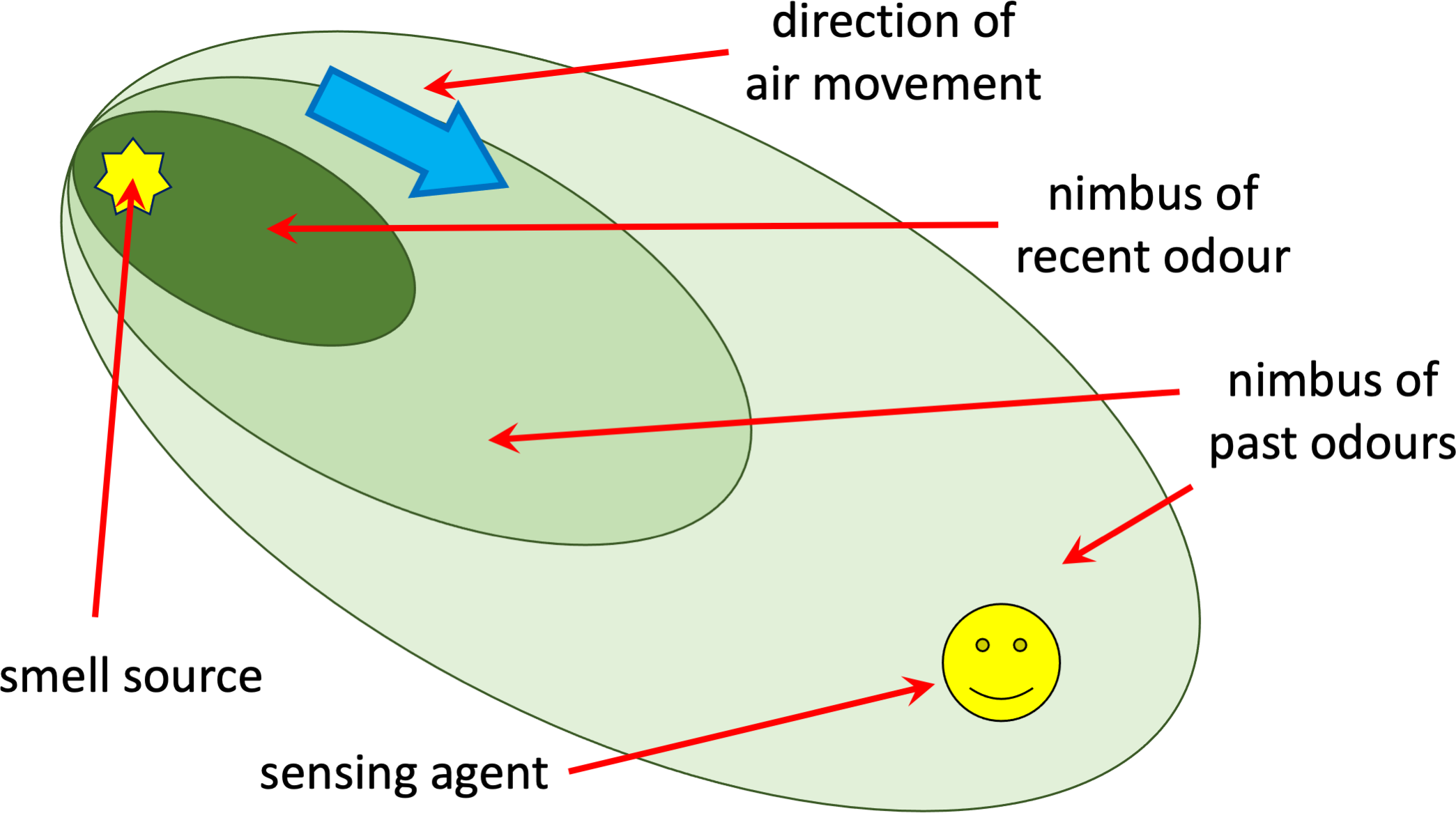Over the years I have intermittently talked and written about nasal interfaces. This was in part in homage to the classic UIST spoof paper on the nose mouse [5], but more seriously looking at the way the specific spatio-temporal characteristics of smell can be used a a metaphor for other forms of (non-smell-based) interaction. In this position paper I'll revisit these arguments as a way of exploring the way that physical and neurological aspects of smell may influence the fundamental way we experience the world olfactorily, and hence how we design for olfactory experience.
This paper draws heavily on several keynotes:
- A. J. Dix (1996). Closing the Loop: modelling action, perception and information. Keynote at AVI'96 - Advanced Visual Interfaces, Eds. T. Catarci, M. F. Costabile, S. Levialdi and G. Santucci. Gubbio, Italy, ACM Press. pp. 20-28. full paper
- A. Dix. (2018). Space, time and memory: tales from a long road.
- Cognitive Processing , 19(Suppl 1):101-108. (Keynote at ICSC, Rome, Sept. 2018). DOI:10.1007/s10339-018-0879-0
- A. Dix. (2022). Follow your nose: history frames the future. Keynote at AVI 2022: Advanced Visual Interfaces, Rome, Italy, 6-10 June 2022 abstract and slides
References
- Steve Benford, John Bowers, Lennart E Fahlén, and Chris Greenhalgh. 1994. Managing mutual awareness in collaborative virtual environments. In Virtual Reality Software and Technology. World Scientific, 223–236.
- Steve Benford and Lennart Fahlén. 1993. A spatial model of interaction in large virtual environments. In ECSCW 1993: Proceedings of the Third European Conference on Computer Supported Cooperative Work. Kluwer Academic Publishers, Dordrecht, The Netherlands.
- Zhen-Peng Bian, Junhu i Hou, Lap-Pui Chau, and Nadia Magnenat-Thalmann. 2014. Human Computer Interface for Quadriplegic People Based on Face Position/Gesture Detection. In Proceedings of the 22nd ACM International Conference on Multimedia (Orlando, Florida, USA) (MM ’14). Association for Computing Machinery, New York, NY, USA, 1221–1224. DOI:10.1145/2647868.2655063
- Kenneth C Catania. 2013. Stereo and serial sniffing guide navigation to an odour source in a mammal. Nature Communications 4, 1 (2013), 1441.
- Tyson R. Henry, Scott E. Hudson, Andrey K. Yeatts, Brad A. Myers, and Steven Feiner. 1991. A Nose Gesture Interface Device: Extending Virtual Realities. In Proceedings of the 4th Annual ACM Symposium on User Interface Software and Technology (Hilton Head, South Carolina, USA) (UIST ’91). Association for Computing Machinery, New York, NY, USA, 65–68. DOI:10.1145/120782.120789
- Yiming Liu, Chun Ki Yiu, Zhao Zhao, Wooyoung Park, Rui Shi, Xingcan Huang, Yuyang Zeng, Kuan Wang, Tsz Hung Wong, Shengxin Jia, et al. 2023. Soft, miniaturized, wireless olfactory interface for virtual reality. Nature Communications 14, 1 (2023), 1–14.
- Casey Trimmer, Andreas Keller, Nicolle R Murphy, Lindsey L Snyder, Jason R Willer, Maira H Nagai, Nicholas Katsanis, Leslie B Vosshall, Hiroaki Matsunami, and Joel D Mainland. 2019. Genetic variation across the human olfactory receptor repertoire alters odor perception. Proceedings of the National Academy of Sciences 116, 19 (2019), 9475–9480.
- Antonio L Zadra, Tore A Nielsen, and Don C Donderi. 1998. Prevalence of auditory, olfactory, and gustatory experiences in home dreams. Perceptual and motor skills 87, 3 (1998), 819–826.
- Adam Zarek, Daniel Wigdor, and Karan Singh. 2012. SNOUT: One-Handed Use of Capacitive Touch Devices. In Proceedings of the International Working Conference on Advanced Visual Interfaces (Capri Island, Italy) (AVI ’12). Association for Computing Machinery, New York, NY, USA, 140–147. DOI:10.1145/2254556.2254583
- Lumin Zhang, Fuqiang Zhou, Weixian Li, and Xiaoke Yang. 2007. Human-Computer Interaction System Based on Nose Tracking. In Proceedings of the 12th International Conference on Human-Computer Interaction: Intelligent Multimodal Interaction Environments (Beijing, China) (HCI’07). Springer-Verlag, Berlin, Heidelberg, 769–778.
|

aural perception (and cosmology)


